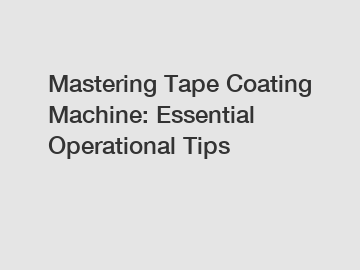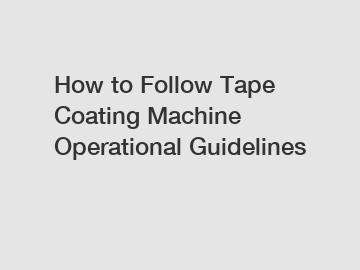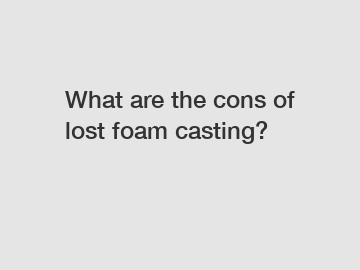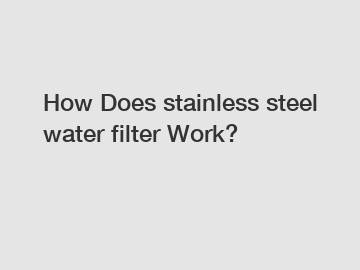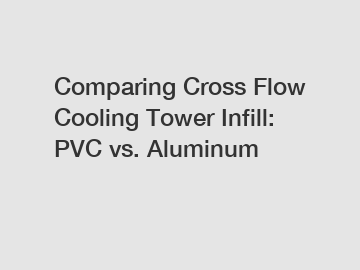Comparing Every Wheel Loader Brand: Who Makes The ...
Comparing Every Wheel Loader Brand: Who Makes The ...
Comparing Every Wheel Loader Brand: Who Makes The Best One?
You will get efficient and thoughtful service from GRS.
Arguably one of the most useful pieces of heavy equipment, wheel loaders can be found on virtually every earthmoving project. Essentially a giant mobile shovel, a wheel loader's main job is to move materials around a site or load dump trucks.
Since they are such popular and valuable machines, wheel loaders are produced by many of the top heavy equipment manufacturers. This means that while you have plenty of options to pick from, it can be difficult to know which wheel loader brand is the best to rent or own. We've put together this blog to serve as a guide to determining who makes the best wheel loader for your project depending on features like size, bucket capacity, horsepower, and more.
About Wheel Loaders
Wheel loaders can lift any type of material, including rubble, gravel, soil, debris, and dirt. Due to their wheels, they have excellent maneuverability on roads and don't damage finished asphalt or concrete. They can also be called front loaders, front-end loaders, bucket loaders, scoop loaders, or skip loaders.
Compact wheel loaders bear many similarities with skid steers, as their method of transportation (wheels) and main functionality are identical. If you're trying to choose between these options or wondering about the benefits of a compact wheel loader vs a skid steer, the best rule to use is that the small loader is one step above the skid steer in size, power, and capacity. If your project is simply too intense for a skid steer to handle, it's time to move up to its larger counterparts.
Manufactured in a wide range of sizes, no project is too big or too small for a wheel loader, depending on the brand you choose to rent or buy from. They range from compact models weighing under 10,000 lbs to large, surface-mining models weighing more than 500,000 lbs. This incredible versatility makes them great for any job site, from landscaping and construction to quarry and mining projects.
Though each brand classifies its equipment slightly differently, there are three main categories for wheel loader sizes. Compact wheel loaders normally range in size from 9,000-20,000 lbs and provide operators with good material handling capabilities to go along with exceptional maneuverability. Medium-sized loaders range from approximately 20,000-50,000 lbs, though some brands list them as high as almost 80,000 lbs. Large wheel loaders are machines above 80,000 lbs, though this is by far the widest range as these models can weigh up to 590,000 lbs.
Wheel Loader Brands
Although this is not a complete list of wheel loader manufacturers, we've prioritized 13 of the top brands that manufacture and sell this equipment in the North American market. Below you'll find a guide to the advantages and disadvantages of the following brands: Caterpillar, John Deere, Volvo, CASE, Wacker Neuson, Hyundai, Komatsu, New Holland, JCB, Doosan, Takeuchi, Bobcat, and Mecalac.
Caterpillar
Providing by far the largest selection of models, Cat wheel loaders set the standard for reliability, productivity, and versatility. Among their 48 models spanning every size category, you're all but guaranteed to find a machine that meets the requirements you need for your project.
Listing them in four categories: compact, small, medium, and large, these machines deliver high performance in any application. Cat's compact-medium models range from 9,414-78,264 lbs and include a wide variety of bucket capacities ranging from 0.8-22.5 cubic yards. A key feature of their machines is exceptional horsepower, reaching a peak of 1,739 hp on their largest models, which is a good indicator of a loader's ability to handle heavier and more intense projects. Their compact selection includes models like the 906M, 908, and 910.
Another key feature of Caterpillar is that they also provide the third heaviest model on the market, the 995, coming in at a whopping 540,555 lbs with a bucket capacity reaching up to 57 cubic yards. This is the largest bucket capacity on the market, making it an exceptional choice for projects requiring lifting an excessive amount of material.
Cat prides itself on limiting downtime, enhancing operator comfort, and protecting those working on the job site through key safety features. Their machines are great for projects of any size, and they are easily one of the best brands on the market for wheel loaders.
John Deere
Another well-known brand for heavy equipment, John Deere makes three sizes of wheel loaders. With their six models of compact equipment ranging from 10,000-20,000 lbs and industry-leading bucket capacities, you can achieve more with less. These machines provide increased productivity in confined spaces and can be paired with snow blowers, pallet forks, or other John Deere wheel loader attachments to increase their versatility. The average bucket size for this range is 1.75 cubic yards.
Reaching weights of up to 43,783 lbs with five cubic yards of bucket capacity, John Deere's mid-sized loaders are among the industry leaders for horsepower. Providing the option between a single-lever joystick or two-lever fingertip controls, operators can pick their preference. These models, including the 444 P-Tier, 624 G-Tier, and 724 P-Tier, are designed to elevate your reach, comfort, and control, and are perfect for reasonably-sized projects.
Providing five large wheel loader models like the 744 P-Tier and the 824 P-Tier, John Deere focuses on delivering the performance, reliability, and comfort you need to stay productive all day long. Achieving a horsepower rating of over 500 on their largest model, the 944K Hybrid, these are highly capable machines that can handle almost any job.
John Deere is a top manufacturer of wheel loaders and provides a selection of productive models that are reliable options for jobs of many sizes. The one downside to their lineup is the lack of extremely large machines to handle the biggest projects.
Volvo
With 17 wheel loader models spanning 9,877-123,459 lbs, Volvo Construction Equipment is always reliable, providing an excellent alternative for many projects. Their machines, like the L25H and L350H, have excellent power and bucket capacity for their size, ranging from 0.9-16.6 cubic yards, and are known to have some of the most comfortable cabins in the industry.
Volvo wheel loaders won awards for lowest cost of ownership and highest retained value in . Designed to reduce cycle times and operating costs, they consistently provide some of the best bang for your buck in the industry, both when it comes to renting and owning.
CASE
CASE compact wheel loaders aim to pick up where their skid steers leave off. With great specs for lift capacity, ground clearance, visibility, and versatility, these small loaders are perfect for smaller projects. These models, like the 121F and 321F, only reach 13,303 lbs in weight but offer improved lifting and breakout force even in their condensed frames.
The second weight class offered by CASE is their "full-sized" loaders, which span 24,203-61,650 lbs and have bucket capacities ranging from 2.1 to 6.25 cubic yards. These models, like the 721G and G, deliver excellent power and efficiency with simplified and enhanced controls. These new controls put the most common settings and functions that you need just inches away from the joystick, making operating your machine that much easier.
The CASE G Series of full-sized loaders promises optimized uptime and cycle times, while also providing excellent fuel efficiency. Though limited in size, you should consider CASE wheel loaders for small or medium-sized projects.
Wacker Neuson
Limited in size and variety, Wacker Neuson has one of the smaller selections on the list - providing eight models with a maximum weight of 22,899 lbs and bucket capacities only reaching up to two cubic yards. Although only providing compact models like the and WL95, these machines are extremely powerful, economical in fuel consumption, and easy to operate. Compatible with numerous attachments, you can create the exact tool you need for your job site with Wacker Neuson wheel loaders.
An offering unique to Wacker Neuson is its telescoping wheel loader. The T is equipped with a powerful Deutz engine and a telescoping loading system which allows it more reach and stacking height. This can be extremely beneficial depending on the project you're working on and should be an option you consider if it fits your priorities.
Hyundai
Hyundai is one of the only brands in the industry to divide their models by a feature other than weight. Their selection of models includes standard Z-bar linkage, XT (extended-reach) versions, and a Tool Master (TM) boom design. All of these options fall into the medium weight range while offering excellent horsepower and bucket capacities, so we'll focus on the difference in their design.
Each XT model provided by Hyundai is an adaptation of their standard loaders. In total, there are nine "basic" Z-bar models and eight models that have extended reach. This selection ranges in weight from 25,595 to 69,450 lbs, has bucket capacities of 2.1 to 6.3 cubic yards and can achieve well over 300 hp. With such a wide variety of equipment available in the medium-weight class, if you're working on a mid-sized project you're sure to find a Hyundai wheel loader that suits your needs.
Tool Master wheel loaders include parallel linkage for increased lifting capacity, improved load stability, and enhanced visibility. Each of these loaders provides excellent bucket capacity and horsepower, and can be used for a wide variety of tasks. Although there are only three models available with a weight capped at 36,380 lbs, the HL930A, HL940A, and HL955A, are extremely capable machines.
Komatsu
Although they don't provide any compact wheel loaders; if you're looking for a machine that can handle the biggest projects you can think of, look no further than Komatsu. Their largest class of loader includes the two heaviest models on the market, the WE and WE, both exceeding 2,000 hp as well as being over 587,000 lbs. These machines are perfect for exceptionally large projects like quarry work and mining, requiring equipment capable of lifting weights unattainable by most brands.
Komatsu also has a variety of medium-large track loaders, providing 17 models ranging from 25,000 to 127,000 lbs. These machines have excellent capacities and horsepower, and use innovative hydraulic and drive train technology to help make your team more productive.
The models manufactured by Komatsu focus on delivering best-in-class power and productivity. Though they may not be great in confined spaces, there is no job too big for a Komatsu wheel loader.
New Holland
Providing some of the lightest machines on the market, New Holland wheel loaders peak at a weight of 19,270 lbs. Though they may be small, these models provide industry-leading bucket capacities for their size ranging from 1 to 4.4 cubic yards. This feature allows them to exceed expectations by performing tasks normally only achievable by larger wheel loaders.
New Holland also provides three compact wheel loaders, the W50C Z-Bar, W50C TC, and W80C HS, though these machines have very similar weights to their "full-sized" counterparts but provide less power and capacity. Unless you're seeking a less expensive wheel loader for a very small project, it's best to rent from New Holland's lineup of full-sized wheel loaders.
JCB
JCB wheel loaders are designed to meet buyers' priorities, and they do this by including customer input in their decision-making. With 13 models ranging from 11,486-47,357 lbs, these machines provide good power but are somewhat limited in their bucket capacities, only reaching a maximum of 3.1 cubic yards.
These models, like the 427, 411 AGRI, and 457 AGRI, are created to optimize safety, efficiency, ease of use, productivity, and comfort. Though it may not quite keep up with industry leaders in some key specs, JCB wheel loaders are worth considering for most projects.
Doosan
Having been in the business for more than 30 years, Doosan has manufacturing wheel loaders down to a science. Their 12 models may not be the heaviest machines on the market, but they provide best-in-class bucket capacities and horsepower with specs ranging from 2.6 to 8.4 cubic yards and 142 to 394 hp, respectively.
All of their models, including the DL580-7, their largest machine, can also be equipped with the exclusive "transparent bucket" option, which provides a supplemental visual perspective by allowing operators to "see-through" the bucket from an in-cab display.
Although not quite reaching the larger weight class achieved by competitors like Caterpillar and Komatsu, Doosan wheel loaders can give any brand in the industry a run for its money when it comes to medium-sized machines. Doosan machines are industry leaders in their weight class and should be kept top-of-mind when you're considering loaders for your project.
Takeuchi
Though they only provide three models of wheel loaders, all in the smallest weight class, Takeuchi still manufactures reliable machines capable of performing a wide range of applications. All the models, the TW60, TW80, and TW95, are engineered to be rugged and durable, with operator-friendly controls that provide a great experience for your team. These models reach a maximum of 114 hp, giving them solid horsepower for more compact loaders. Powerful, maneuverable, and comfortable, these front loaders are excellent alternatives for any small-scale project.
Want more information on Loader attachment manufacturer? Feel free to contact us.
Additional reading:What Are the Benefits of PFA Lined Centrifugal Pumps?
Which Coating Materials Enhance Lost Foam Casting?
How to Select the Best EPS Pre-Expander Drying System?
10 Questions You Should Know about Sustainable Energy Solutions
4 Tips to Select the Perfect Rubber Foam Insulation Sheet
How Can The Foam Foundry Transform Sustainability?
Key Questions to Ask When Choosing a Foam Supplier
Bobcat
Tied for the smallest selection on the market, Bobcat only manufactures two models of wheel loaders, the L65 and L85. With operating weights of 9,944 and 11,164 lbs, these two compact loaders deliver impressive material handling capabilities and high maneuverability. These models also prioritize quick and easy attachment integration, giving you some of the best possible versatility and enabling the machines to handle a wide variety of jobs.
Providing exceptional material-handling capabilities, high bucket capacity, and high lift height, Bobcat should be considered for projects a bit too big for a skid steer, but only requiring the smallest wheel loaders.
Mecalac
The only other brand with only two models, the AF and AF are still more than capable of keeping up with the competition. With excellent bucket capacities reaching up to 2.6 cubic yards, Mecalac wheel loaders weigh only 12,786 and 13,230 lbs, respectively. The AF especially is top of its weight class in capacity in comparison with its closest competitors from other brands. They may only be able to handle a select variety of jobs, but Mecalac's two models are excellent options for small projects.
Things To Know Before Choosing Your Wheel Loader
Most of the brands listed above offer similar products, though some may reach larger capacities and operating weights. The most important factors in determining which brand is right for you will be the size and scope of the project, along with any attachments you may need.
Manufacturers such as John Deere and Bobcat also provide many attachment options to go along with their models, which could make them better all-in-one solutions. Brands such as Komatsu and Caterpillar, on the other hand, may not offer the same selection of accessories but provide remarkable ranges of capabilities untouched by their competition.
Overall, if you're looking for a wheel loader to handle the largest jobs you can think of, your brand options may be limited, but once you move into medium and small loaders, the market is overflowing with options.
Theoretically, the more options a manufacturer provides, the more likely you are to find a model that suits your project. You can also rent from a variety of brands and test out their models on the job site before making a decision about which one you like best. This allows you to get familiar with your options and preferences and helps you get a good idea of what you're looking for going into your next wheel loader rental.
Rent a Wheel Loader
Whether you came looking for a model of a specific size and capability, or just trying to figure out who makes the best wheel loader, we hope that this blog has been a helpful tool and has provided some insight into your many options. Whether you're looking to do snow removal, landscaping, construction, or anything else, we're confident you'll find a wheel loader rental that works best for you.
Looking to rent a wheel loader? Search the DOZR marketplace for models by bucket capacity to find your next wheel loader rental today.
The pros and cons of compact wheel loaders | Equipment World
The Kubota R640 has a Kubota V engine rated at 64.3 gross horsepower. The hydrostatic transmission provides a top speed of 12.4 mph. Auxiliary flow is 17.8 gpm and pressure is 2,973 psi. Articulation is 40 degrees each direction; rear frame oscillation is plus or minus 8 degrees. Bucket breakout force is 9,869 pounds. Hinge pin height is 10 feet 8 inches, and dump height is 8 feet 3 inches.
By design and in response to customer demand, compact wheel loaders ' those with less than 90 horsepower ' are being adapted to a wider range of applications.
They can be fitted with a variety of attachments beyond buckets and forks, making some competition for skid steers.
But for the most part compact wheel loaders are used for their primary purpose: loading and material handling.
And as loaders, compact models fit a specific spot. While not as nimble as compact machines with counterrotation, they still deliver good maneuverability in tight spaces.
'They provide an advantage in confined and compact supply yards where you have enough space to operate because there's enough space for trucks to maneuver throughout the yard,' says Andrew Dargatz, product manager, Case Construction Equipment.
Moving up to mid-sized wheel loaders offers even more performance, but machine size and cost also go up quickly.
'Compact wheel loaders are the perfect bridge between larger wheel loaders and more compact equipment, such as a skid steer or CTL,' he says.
Expanding the range
YanmarFitted with buckets or forks, compact wheel loaders are true production machines, similar to larger wheel loaders. Their operating costs are consistent and vary only as input costs vary.
But Patrick Baker, Kubota product manager for construction equipment, says that while compact wheel loaders are 'excellent at dirt work and lifting heavy loads with pallet forks, they can also be fitted with a wide range of attachments including brush cutters, grapples and stump grinders.'
One challenge, though, is trying to determine the costs of using the machines beyond their primary purpose and how that can affect project selection and bidding.
'Compact wheel loaders have the same costs as other ground-engaging equipment,' says Frank Gangi, product manager CWLs and attachments for Yanmar Compact Equipment North America.
These include fuel, tires and maintenance items such as oil and filters. But moving from traditional loading to more diverse applications may affect those costs.
'If you are in very rocky terrain that will damage tires, you should consider that cost in the bid,' Gangi says. 'If it is very hilly or there are long travel distances, you should consider the additional fuel costs.'
GiantHow do you minimize escalating costs?
'In general, if you have a good plan and avoid things like wheel spin, static turning and excessive idling,' he says, 'you can avoid extra wear and tear and wasted fuel.'
Tires designed for loading may not be best for other applications such as clearing, forestry and site preparation, says Luke Gribble, solutions marketing manager, John Deere. 'Examine tire options to get the best match, and do understand tire load.'
A good metric for ensuring a tire's load rating can meet job demands is ton-miles per hour, or TMPH (TKPH in countries using kilometers per hour for speed). TMPH/TKPH is often given in tire spec sheets for larger equipment but not always for tires of the size used by CWLs.
Pros and cons of compact wheel loaders
JCBCompact wheel loaders have many advantages over other compact equipment, including greater breakout force, load height and reach and lift capacity. They also have higher ground speed and better operator comfort and visibility.
The level of turf disruption may be less than with other machines, but it can also be more.
One advantage offered by compact wheel loaders over other compact equipment of comparable lift capacity is less horsepower. 'Lower horsepower usually means lower maintenance costs and always means lower fuel consumption,' says Ethan Clowes, JCB product manager for skid steer/compact track loaders and backhoe loaders.
JCB's two compact models, the 407 and 409, both have engines of less than 75 horsepower, use no diesel exhaust fluid and have no diesel particulate filter. Yet the 409 offers up to 10,104 pounds straight tipping load with a general purpose bucket.
Ryan Anderson, product marketing manager at New Holland Construction, says transportability puts compact wheel loaders at an advantage in some cases, depending on the application. 'Because of their size, skid steer and compact track loaders are easier to trailer than compact wheel loaders,' he says. 'But because of their roadability, compact wheel loaders are able to drive from job to job, a huge advantage in applications such as snow removal.'
Wacker NeusonTwo of the largest operating costs favor compact wheel loaders, says Jay Quatro, commercial product manager, Wacker Neuson. Unlike skid steers, compact wheel loaders don't skid or drag their tires, so tire wear is reduced.
'A wheel loader, whether articulating or all-wheel-steer, saves premature wear and allows the owner to get more hours out of a set of tires,' Quatro says.
Wheel loaders also typically use less fuel than a skid steer or compact track loader of the same size and capacity, he says. 'This is because operators don't run at full throttle on a wheel loader as they usually do on those other machines.'
Case CEDarren Ashton, product manager compact equipment at Volvo Construction Equipment, points to the advantages of CWLs' larger size.
'Their higher ground clearance helps when a jobsite is rough,' he says. 'The added cab height and higher speed options allow quicker, easier work for applications such as street sweeping and moving snow.'
That higher design of the CWL, however, also creates a higher center of gravity. 'The stability and load capacity of a wheel loader is negatively affected the more irregular the terrain becomes,' says Quatro. Articulation amplifies this effect. 'Operators should exercise caution when leaving pavement or other hard surfaces and venturing onto uneven ground or rough terrain.'
New HollandWhen it comes to running attachments, auxiliary hydraulics are becoming commonplace on compact wheel loaders. Many also offer high-flow options.
However, high flow is relative, says Anderson. That option on a compact wheel loader may provide 32 gallons per minute and 3,500 psi (65 hydraulic horsepower), which is significantly more pressure and double the gallons per minute of the historical CWL standard configuration. (Hydraulic horsepower is a convenient way of comparing the hydraulic power of two machines with dissimilar pressure and flow values. Hydraulic horsepower = gpm x psi ÷ 1,714, so in this example 32 x 3,500 ÷ 1,714 = 65.3 hhp.)
But skid steers and compact track loaders continue to increase their high-flow numbers as well, with 50 gpm and 4,500 psi (131 hydraulic hp) becoming available.
So a compact wheel loader even when equipped with a high-flow option may not have sufficient hydraulic horsepower to operate attachments designed for the newest, most powerful skid-steer and compact track loaders.
'Certain mulcher heads, cold planers and the like may require more hydraulic horsepower than even a high-flow compact wheel loader can provide,' says Anderson.
'But for most applications, they'll be fine.'
Tech for compact wheel loaders
CaterpillarWhile compact wheel loaders are being used for more applications than in the past, they'll never have the versatility of other compact machines nor do they provide as good a platform for technological development. There have been tech features added to compact wheel loaders, however, especially to help them function better as loaders.
Kade Lusk, product application specialist, Cat, describes the benefits of six such features:
- Ride control improves operator comfort, reduces material spillage and machine wear.
- Speed control decouples engine speed from travel to allow full hydraulic power at low ground speeds.
- Rimpull control reduces wear on the tires and machine while increasing loading efficiency.
- Drivetrain modes match performance parameters to conditions and operator preferences.
- Differential locks improve performance in difficult underfoot conditions. 'Not all diff locks are the same,' says Lusk. 'Some can be engaged on the fly while some require the wheels be stopped first. Be sure you know which type you have to prevent expensive damage.'
- Programmable kickouts return the linkage to an operator-designated point on every cycle to improve efficiency and safety while reducing operator fatigue. 'Contrary to what some people think, these are not mere creature comforts or added-cost items,' says Lusk. 'They provide added safety and value. We can show the dollar amount saved over any given time period by utilizing these features.'
Electric models hit the market
Volvo CEGiant loaders, distributed in North America by Tobroco Machinery LLC, has seven model series of compact wheel loaders. Available features include an optional gearbox providing travel speeds up to 21.6 mph, cab or canopy operator station and high-flow hydraulics. They come in Z-bar or X-Tra boom configurations. The X-Tra provides better visibility and more lift capacity. While Giant loaders have both articulation and oscillation, their Stabilo feature locks out oscillation for improved performance in rough conditions.
Giant partnered with Jungheinrich in designing the G200E electric wheel loader. It currently offers telescopic booms on its G, G and G models. Tele models of the G and a second-generation G tele loader are scheduled for release later in .
Within three to five years Giant intends to have standard, telescopic and electric versions of all models.
As for electric models, more are emerging. Compact wheel loaders' high rated operating capacities handle battery weight well. Their applications benefit from the near-instantaneous torque provided by electric motors.
'Models such as Volvo's L20 Electric and L25 Electric are ideal for low-emission and low-noise jobs,' says Ashton. They also don't require engine-related maintenance products including oil, oil filters, diesel particulate filters or diesel exhaust fluid.
Other buying considerations
John DeereAnderson says linkage options must be considered when purchasing a compact wheel loader. 'The Z-bar design provides greater bucket breakout force, while the parallel or toolcarrier design provides better visibility to the forks.'
He says New Holland uses a Euro-style bucket as standard equipment, but there's growing interest in skid-steer style buckets. These use longer lips and lower backs for improved visibility with no loss of capacity.
'The new Kubota R540 and R640 wheel loaders feature a standard multi-function operating lever,' says Baker. 'This gives operators the ability to perform work quicker and more efficiently.' Those models also offer KubotaNow telematics.
Gribble says the Deere 244L and 324L have hydrostatic drive and an optional Attachment Assist Package, which includes creep mode with throttle lock. Ride control can be set to deactivate at lower speeds so it doesn't inhibit performance when loading from a pile.
So how do you choose the right loader?
Clowes, with JCB, says lift height determines model choice. The right-sized loader is the one that just gets material into the hopper.
'That's the loader,' he says, 'that provides the customer with the best value.'
Hitachi
For more information, please visit Excavator Buckets.
Sodium battery Technical Analysis of Hina NaCR32140- ...
The Truth About The “Perfect” Sippy Cup
How Does cooling tower noise reduction Work?
What is the Advantage and Disadvantage of Tape Coating Machine
Is NCM Lithium Battery the Future of Energy Storage?
Key Considerations to Make When Choosing Rubber Foam Board
How Does a Primary Sealing Lip Seal Work?




